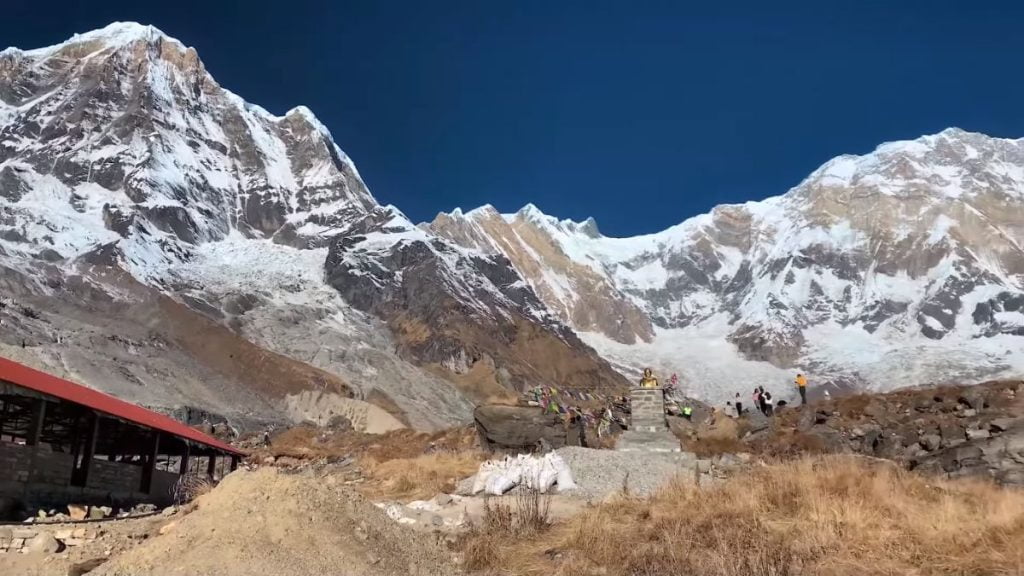The most famous is the so-called Royal trek from Pokhara. Combining rugged scenes of the world’s highest mountains with all the effort of a strenuous amble in the countryside, the only drawback of the Royal trek is that it doesn’t offer tea house accommodation en route. But again this drawback is precisely what keeps the crowds at bay.
A long, arduous trek is not for everyone; in fact, only around 10 percent of Nepal visitors go trekking. But Trekking doesn’t necessarily entail weeks in the wilderness, and Nepal is also blessed with numerous short and less taxing walks in the hills.

The three- to five-day trek never goes above 2,000 m (6,600 ft), and the area of the climb of the gentle variety, making it a perfect trek for children or anyone who is not as fit as they might be.
It begins with a short taxi ride from Pokhara to Bijayapur(an army camp), from where a trail ascends through rice fields, past a small village to resting place under a pipal tree. Such trees were planted long ago with the purpose of providing shade for travelers, and often-like this one-have a stone bench, or Chautara, beneath them.
The trail follows a ridge, providing stunning views (weather permitting) of Machhapuchhare and Annapurna. Read my 8 days of annapurna trekking experience days. A late afternoon camp in the vicinity allows you to feast your eyes on the mountains in the glow of sunset while you enjoy a meal cooked over a campfire.
Gurung village of Shakhlung to Annapurna
The second day involves a gradual climb, passing through villages where it is possible to buy an average dal Bhat (rice and lentils) lunch- of interest if you haven’t tried one before. The Gurung village of Shakhlung, at 1,750m(5,740 ft), is the usual place to overnight. By the third day, the ground you’ve covered even in this short time means that the skyline is changing. As the trail descends steeply, Annapurna II and Himalchuli come into view.
After pausing at a checkpoint, which also has a couple of tea shops, the trail seconds once again, making for Chisophani, a village with a small temple and a campsite that commands beautiful mountain views.
With the exception of a final ridge, just before entering the Pokhara valley again, you spend most of the final day of the trek descending, first along a ridge and then sharply down a series of steps. The walk ends, as it began, through rice fields. At the village of Begnas, you can catch a taxi 12 km
(7 miles) back to Pokhara.

